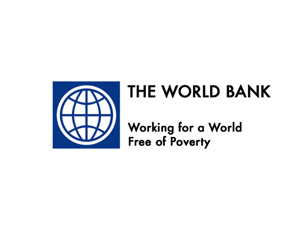
Global economic prospects to improve in 2015, but divergent trends pose downside risks, says WB
After growing by an estimated 2.6 percent in 2014, the global economy is projected to expand by 3 percent this year, 3.3 percent in 2016 and 3.2 percent in 2017 1, predicts the Bank’s twice-yearly flagship. Developing countries grew by 4.4 percent in 2014 and are expected to edge up to 4.8 percent in 2015, strengthening to 5.3 and 5.4 percent in 2016 and 2017, respectively.
“In this uncertain economic environment, developing countries need to judiciously deploy their resources to support social programs with a laser-like focus on the poor and undertake structural reforms that invest in people,” said World Bank Group President Jim Yong Kim. “It’s also critical for countries to remove any unnecessary roadblocks for private sector investment. The private sector is by far the greatest source of jobs and that can lift hundreds of millions of people out of poverty.”
Underneath the fragile global recovery lie increasingly divergent trends with significant implications for global growth. Activity in the United States and the United Kingdom is gathering momentum as labor markets heal and monetary policy remains extremely accommodative. But the recovery has been sputtering in the Euro Area and Japan as legacies of the financial crisis linger. China, meanwhile, is undergoing a carefully managed slowdown with growth slowing to a still-robust 7.1 percent this year (7.4 percent in 2014), 7 percent in 2016 and 6.9 percent in 2017. And the oil price collapse will result in winners and losers.
Risks to the outlook remain tilted to the downside, due to four factors. First is persistently weak global trade. Second is the possibility of financial market volatility as interest rates in major economies rise on varying timelines. Third is the extent to which low oil prices strain balance sheets in oil-producing countries. Fourth is the risk of a prolonged period of stagnation or deflation in the Euro Area or Japan.
“Worryingly, the stalled recovery in some high-income economies and even some middle-income countries may be a symptom of deeper structural malaise,” said Kaushik Basu, World Bank Chief Economist and Senior Vice President. “As population growth has slowed in many countries, the pool of younger workers is smaller, putting strains on productivity. But there are some silver linings behind the clouds. The lower oil price, which is expected to persist through 2015, is lowering inflation worldwide and is likely to delay interest rate hikes in rich countries. This creates a window of opportunity for oil-importing countries, such as China and India; we expect India’s growth to rise to 7 percent by 2016. What is critical is for nations to use this window to usher in fiscal and structural reforms, which can boost long-run growth and inclusive development.”
On the back of gradually recovering labor markets, less budget tightening, soft commodity prices, and still-low financing costs, growth in high-income countries as a group is expected to rise modestly to 2.2 percent this year (from 1.8 percent in 2014) in 2015 and by about 2.3 percent in 2016-17. Growth in the United States is expected to accelerate to 3.2 percent this year (from 2.4 percent last year), before moderating to 3 and 2.4 percent in 2016 and 2017, respectively. In the Euro Area, uncomfortably low inflation could prove to be protracted. The forecast for Euro Area growth is a sluggish 1.1 percent in 2015 (0.8 percent in 2014), rising to 1.6 percent in 2016-17. In Japan, growth will rise to 1.2 percent in 2015 (0.2 percent in 2014) and 1.6 percent in 2016.
Trade flows are likely to remain weak in 2015. Since the global financial crisis, global trade has slowed significantly, growing by less than 4 percent in 2013 and 2014, well below the pre-crisis average growth of 7 percent per annum. The slowdown is partly due to weak demand and to what appears to be lower sensitivity of world trade to changes in global activity, finds analysis in the report. Changes in global value chains and a shifting composition of import demand may have contributed to the decline in responsiveness of trade to growth.
Commodity prices are projected to stay soft in 2015. As discussed in a chapter in the report, the unusually steep decline in oil prices in the second half of 2014 could significantly reduce inflationary pressures and improve current account and fiscal balances in oil-importing developing countries.
“Lower oil prices will lead to sizeable real income shifts from oil-exporting to oil-importing developing countries. For both exporters and importers, low oil prices present an opportunity to undertake reforms that can increase fiscal resources and help broader environmental objectives,” said Ayhan Kose, Director of Development Prospects at the World Bank.
Amongst large middle-income countries that will benefit from lower oil prices is India, where growth is expected to accelerate to 6.4 percent this year (from 5.6 percent in 2014), rising to 7 percent in 2016-17. In Brazil, Indonesia, South Africa and Turkey, the fall in oil prices will help lower inflation and reduce current account deficits, a major source of vulnerability for many of these countries.
However, sustained low oil prices will weaken activity in exporting countries. For example, the Russian economy is projected to contract by 2.9 percent in 2015, getting barely back into positive territory in 2016 with growth expected at 0.1 percent.
In contrast to middle-income countries, economic activity in low-income countries strengthened in 2014 on the back of rising public investment, significant expansion of service sectors, solid harvests, and substantial capital inflows. Growth in low-income countries is expected to remain strong at 6 percent in 2015-17, although the moderation in oil and other commodity prices will hold growth back in commodity exporting low-income countries.
“Risks to the global economy are considerable. Countries with relatively more credible policy frameworks and reform-oriented governments will be in a better position to navigate the challenges of 2015,” concluded Franziska Ohnsorge, Lead Author of the report.